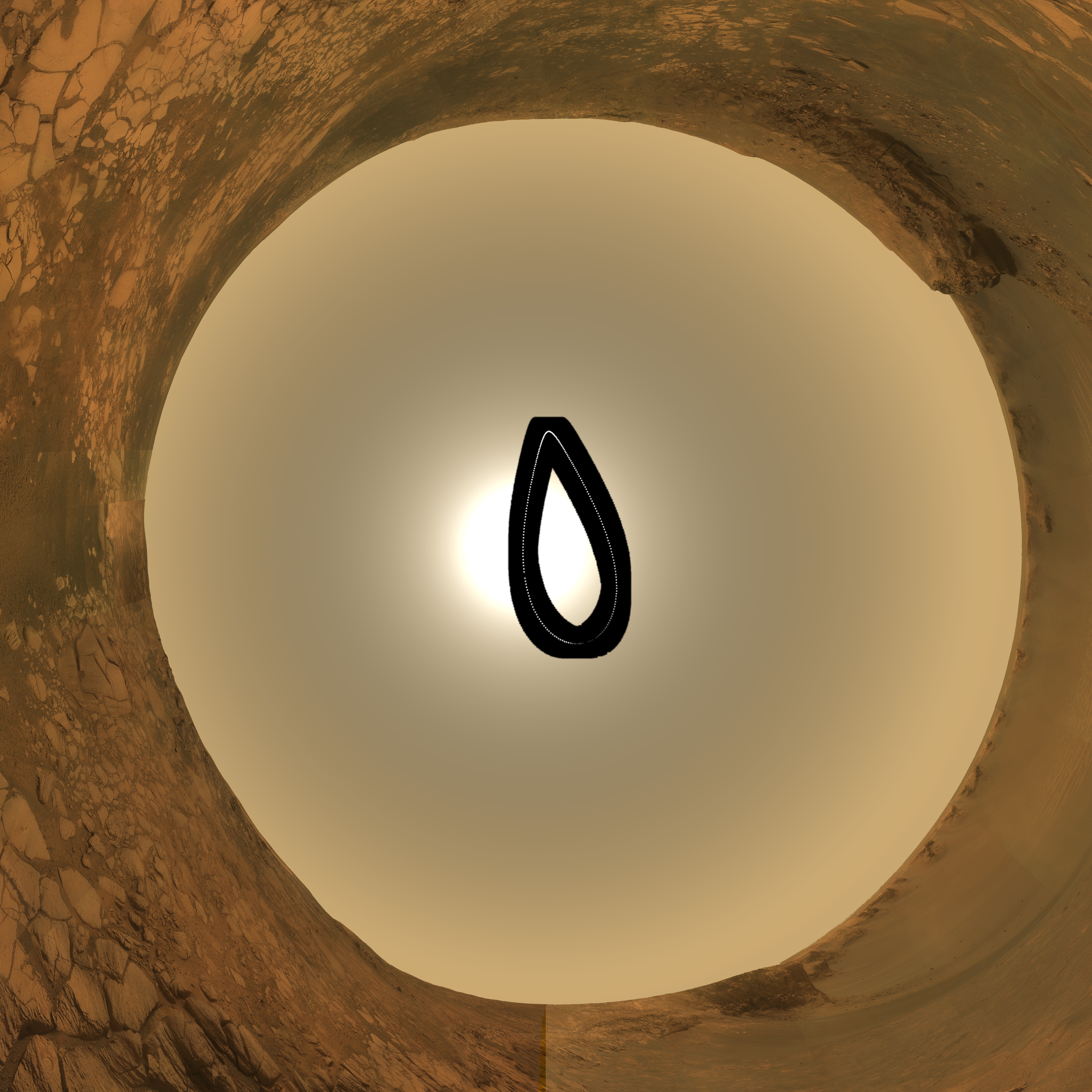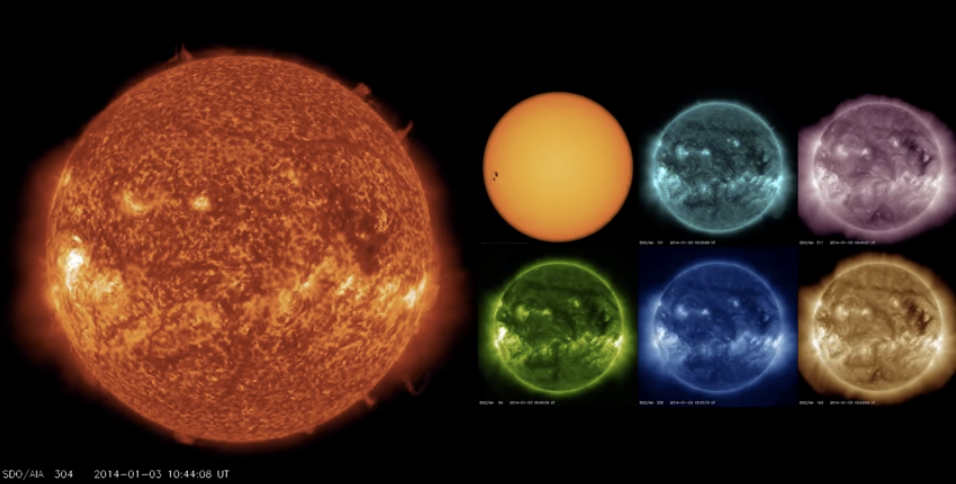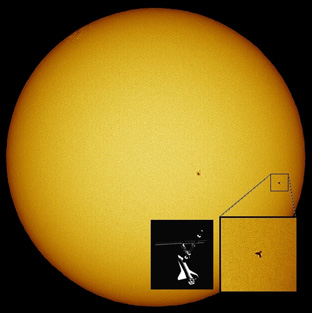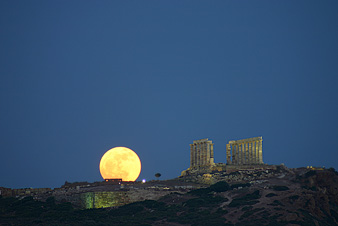Solar Pictures of the Day
Pictures of the Day
Cool Solar Imagery
Click each image to enlarge
|

Opportunity's Mars Analemma
May 6, 2014
Image Credit: NASA/JPL/Cornell/ASU/TAMU
Explanation:
Staring up into the martian sky, the Opportunity rover captured an image at 11:02 AM local mean time nearly every 3rd sol, or martian day, for 1 martian year. Of course, the result is this martian analemma, a curve tracing the Sun's motion through the sky in the course of a year (668 sols) on the Red Planet. Spanning Earth dates from July, 16, 2006 to June 2, 2008 the images are shown composited in this zenith-centered, fisheye projection. North is at the top surrounded by a panoramic sky and landscape made in late 2007 from inside Victoria crater. The tinted martian sky is blacked out around the analemma images to clearly show the Sun's positions. Unlike Earth's figure-8-shaped analemma, Mars' analemma is pear-shaped, because of its similar axial tilt but more elliptical orbit. When Mars is farther from the Sun, the Sun progresses slowly in the martian sky creating the pointy top of the curve. When close to the Sun and moving quickly, the apparent solar motion is stretched into the rounded bottom. For several sols some of the frames are missing due to rover operations and dust storms.
From Astronomy Picture of the Day
|
|

The Sun Rotating
March 12, 2014
Video Credit: SDO, NASA; Digital Composition: Kevin Gill (Apoapsys)
Explanation:
Does the Sun change as it rotates? Yes, and the changes can vary from subtle to dramatic. In the above time-lapse sequences, our Sun -- as imaged by NASA's Solar Dynamics Observatory -- is shown rotating though the entire month of January. In the large image on the left, the solar chromosphere is depicted in ultraviolet light, while the smaller and lighter image to its upper right simultaneously shows the more familiar solar photosphere in visible light. The rest of the inset six Sun images highlight X-ray emission by relatively rare iron atoms located at different heights of the corona, all false-colored to accentuate differences. The Sun takes just under a month to rotate completely -- rotating fastest at the equator. A large and active sunspot region rotates into view soon after the video starts. Subtle effects include changes in surface texture and the shapes of active regions. Dramatic effects include numerous flashes in active regions, and fluttering and erupting prominences visible all around the Sun's edge. This year our Sun is near its Solar maximum activity of its 11-year magnetic cycle. As the video ends, the same large and active sunspot region previously mentioned rotates back into view, this time looking different.
From Astronomy Picture of the Day
|
|

International Space Station Transit
Jul 28, 2005
Credit & Copyright: Anthony Ayiomamitis
For more information:
http://www.perseus.gr/Astro-Sat-Trans-2005-07-28.htm
http://www.perseus.gr/Astro-Tips-ISS-Transits.htm
|
|

Moonrise, Cape Sounion, Greece
Credit & Copyright: Anthony Ayiomamitis
Explanation: The Moon was full this month on June 22nd,
only a day after the northern hemisphere's summer solstice. Since this
solstice marked the northernmost point of the Sun's annual motion through
planet Earth's sky, the full Moon rising near the ecliptic plane opposite
the Sun was at its farthest south for the year. Only a month earlier,
on May 23rd, astronomer Anthony Ayiomamitis recorded this picture of
another southerly full Moon rising above Cape Sounion, Greece. The twenty-four
hundred year old Temple of Poseidon lies in the foreground, also visible
to sailors on the Aegean Sea. In this well-planned, single exposure,
a long telephoto lens makes the Moon loom large, but even without optical
aid casual skygazers often find the full Moon looking astonishingly
large when seen near the horizon. That powerful visual effect is known
as the Moon Illusion.
From Astronomy
Picture of the Day
|
Giant sunspot 720 and a passing airplane photographed
by amateur astronomer Jan Koeman of the Netherlands on Jan. 15, 2005.
|
For more images, visit the Solar
Art pages.
|
| |

